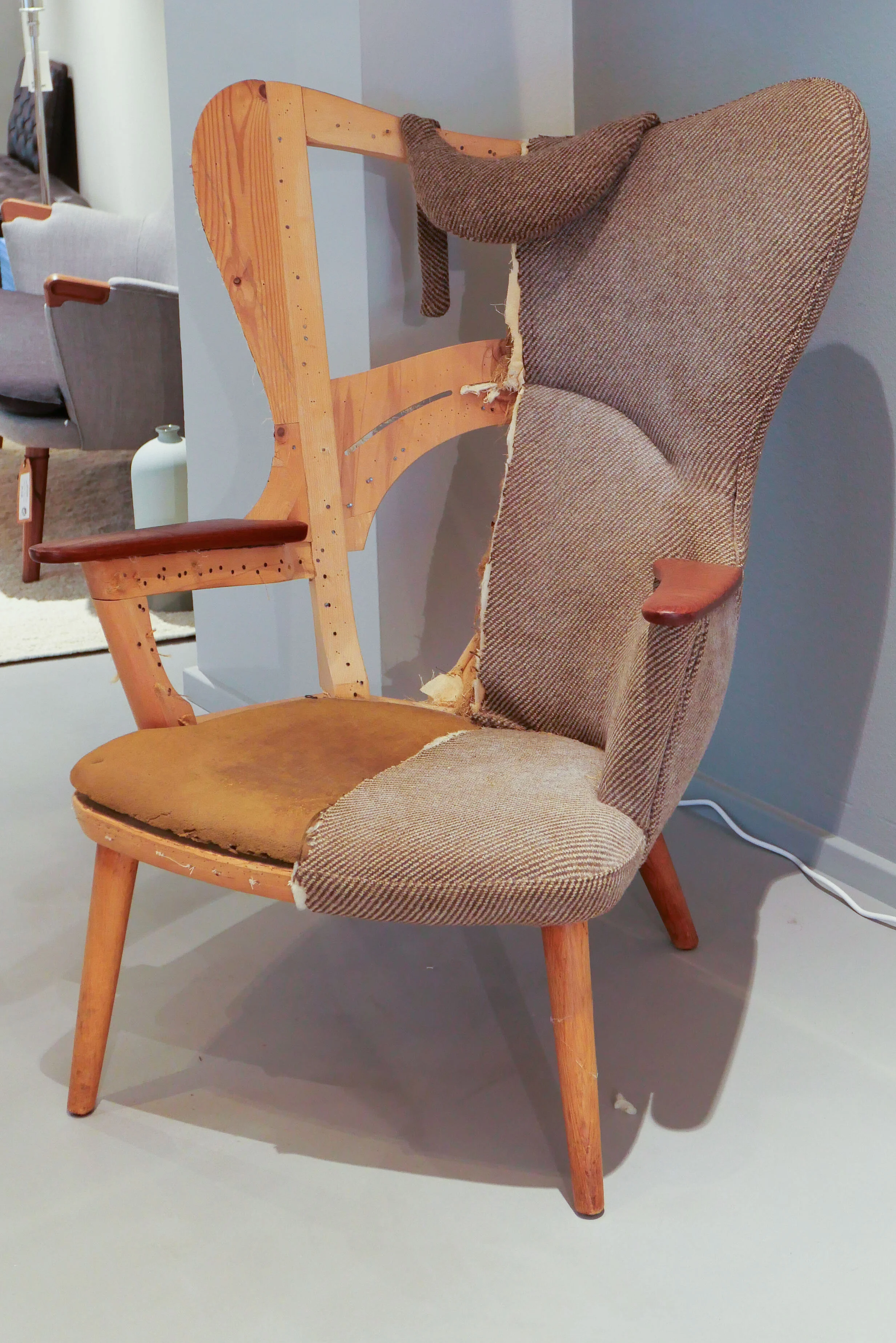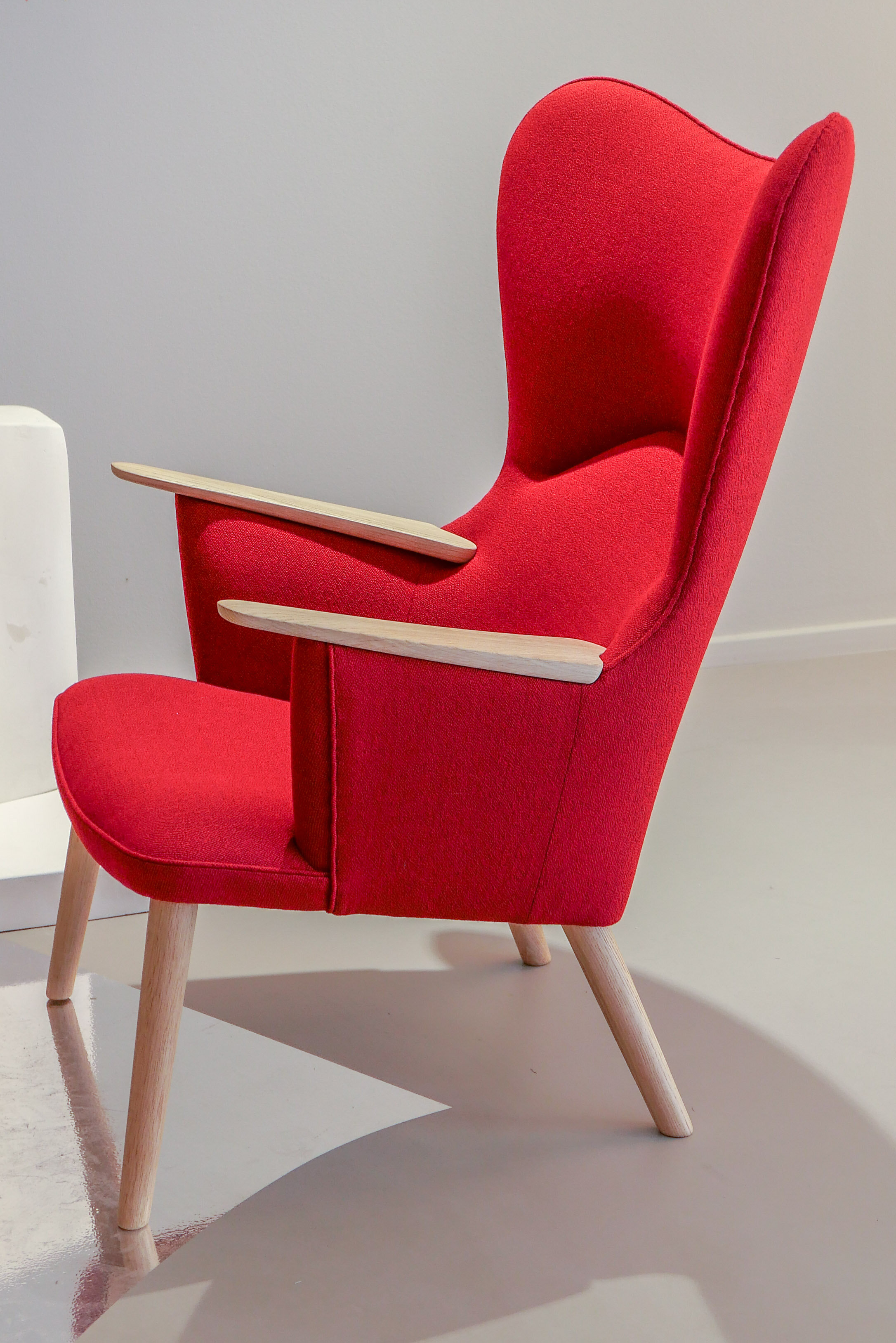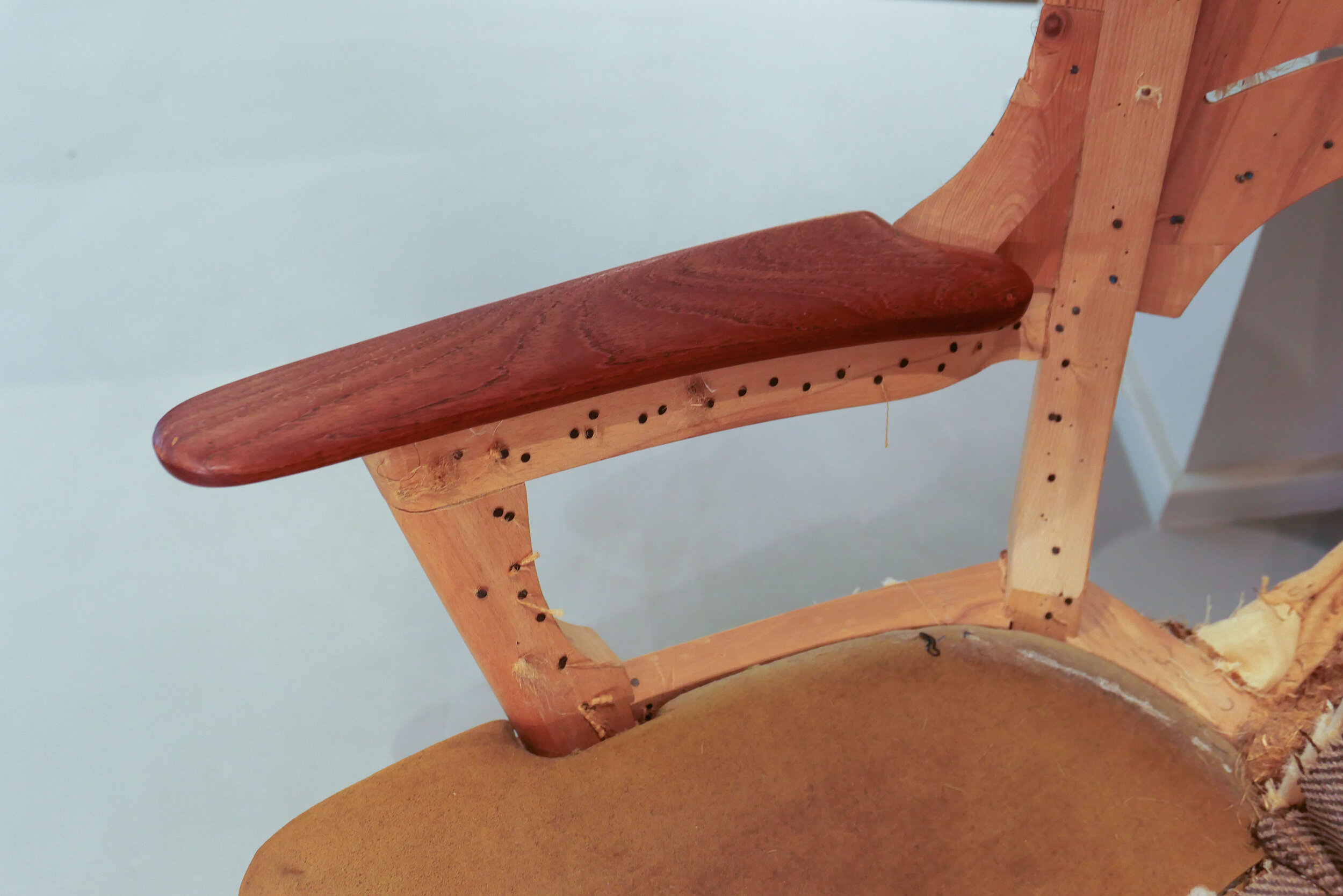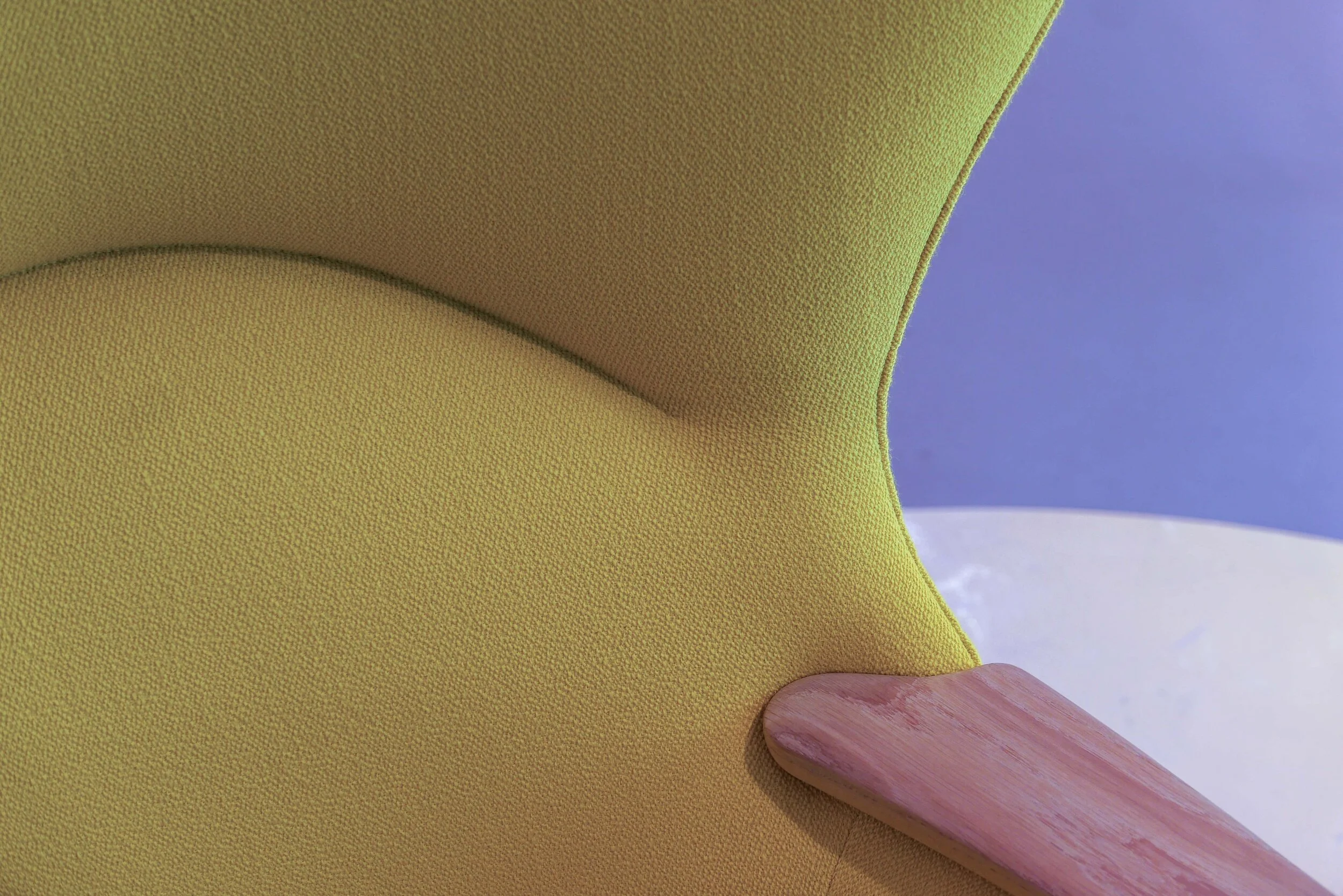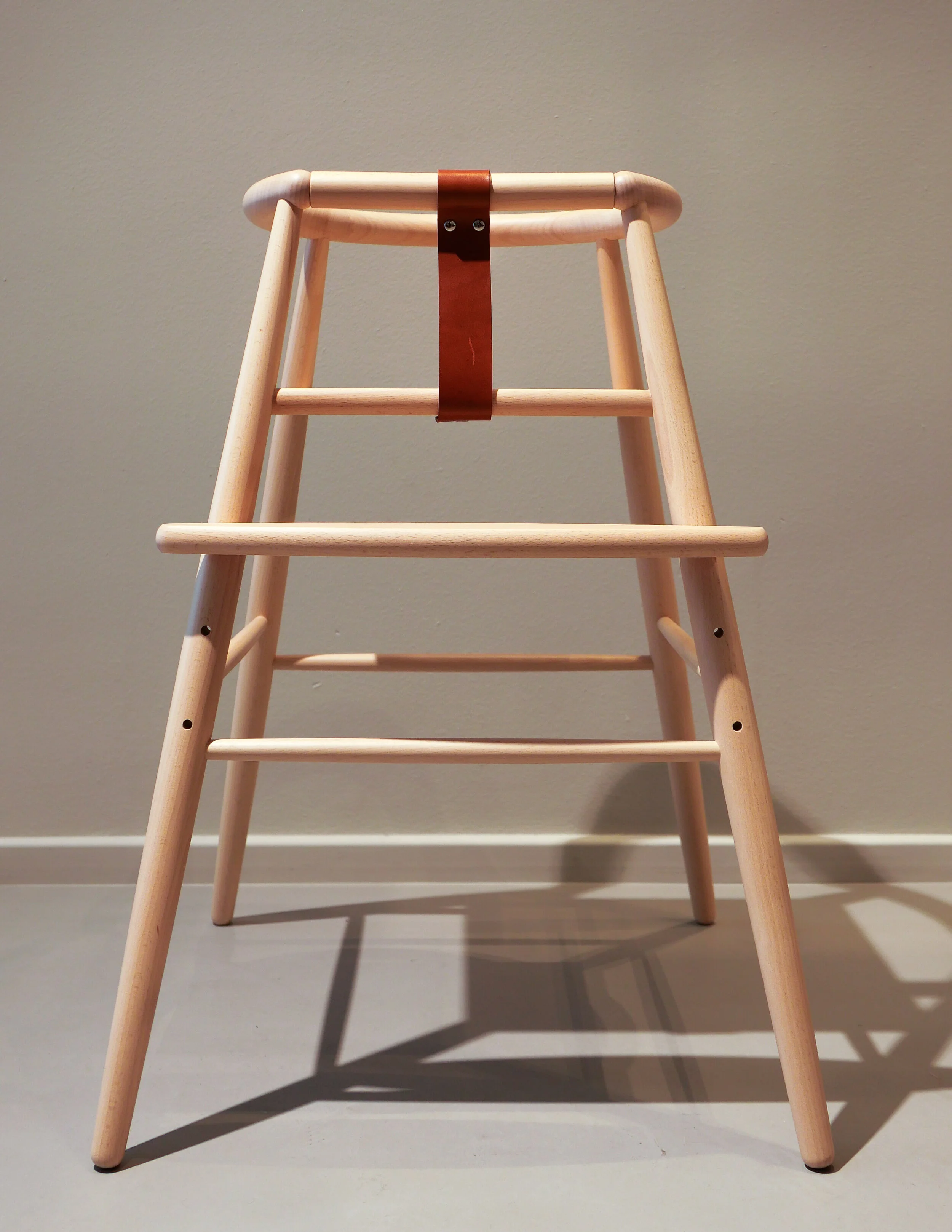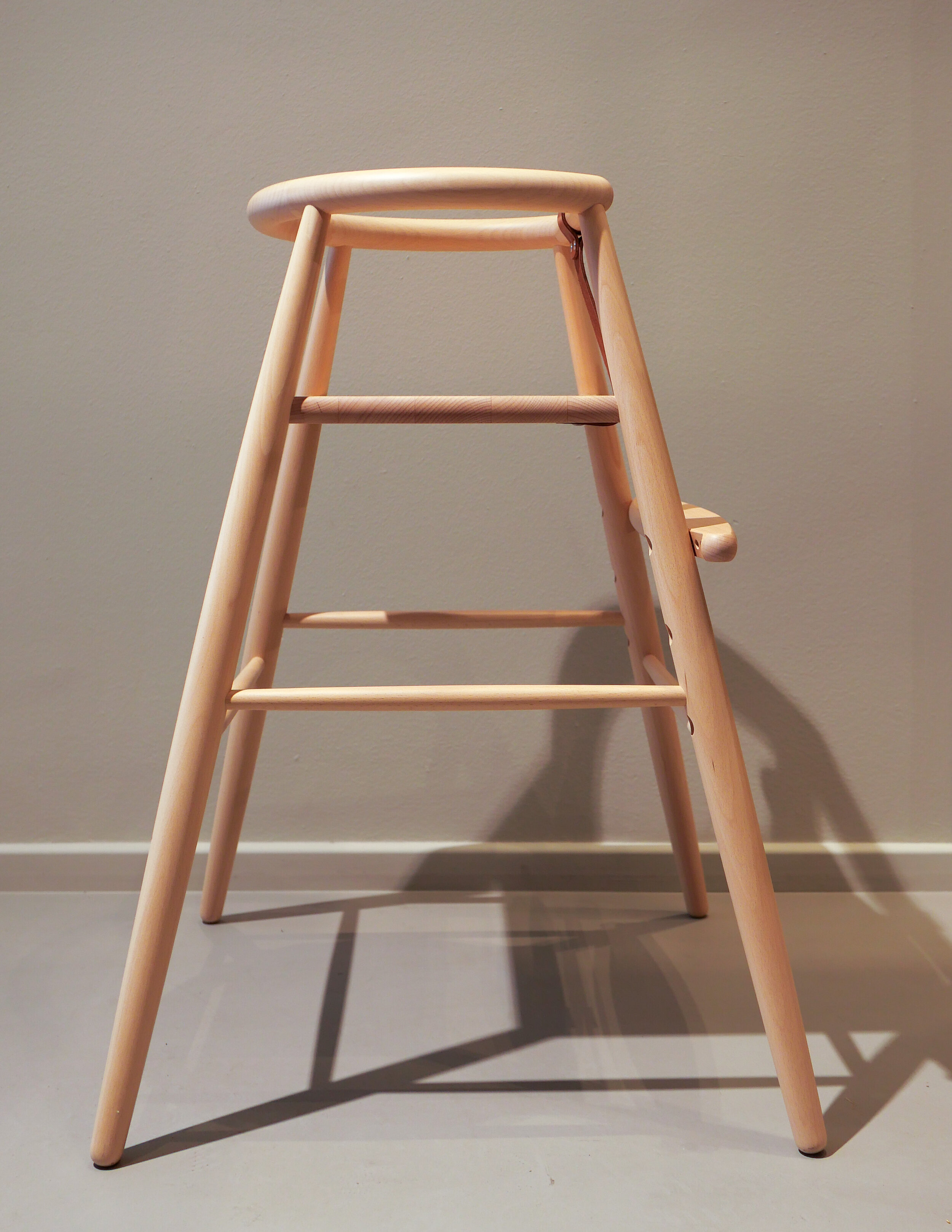upholstery by Carl Hansen
/For 3daysofdesign, the Carl Hansen store normally sets up a demonstration to show how one of the classic designs in their collection is made. This year there was a Mama Bear arm chair where the upholstery had been cut vertically down the centre and half of the fabric and the upholstery had been taken away to reveal the structure of the chair underneath.
There was also a craftsman, set up in the store with a workbench, who was covering a new chair.
There are two important points to be made. First, the structure in wood beneath the upholstery is as well made and as rationally and as carefully designed as if it is to be seen. Here the frame gives the final chair not just its overall shape but also forms some of the distinct features of the design so, in this chair, the sharp crease across the back is created by pulling back the fabric to a curved slot in a curved cross timber at the centre of the back.
Then, second, you can see the importance of the way in which the fabric is cut with a very precise pattern and it is fitted tightly over the different types of upholstery with layers creating soft padding in some areas and firmer support in others and with sharp seams or, when the design needs it, strong lines of piping to create the neat but smart fit …. as sharp as any hand-made suit from Savile Row.
Perhaps there is nowhere better to understand the quality of the work than to see how the upholstery fits neatly without gaps or tension around the wood arm of the chair.
The Mama Bear Chair was designed by Hans Wegner in 1954 and has just be reissued by Carl Hansen.




